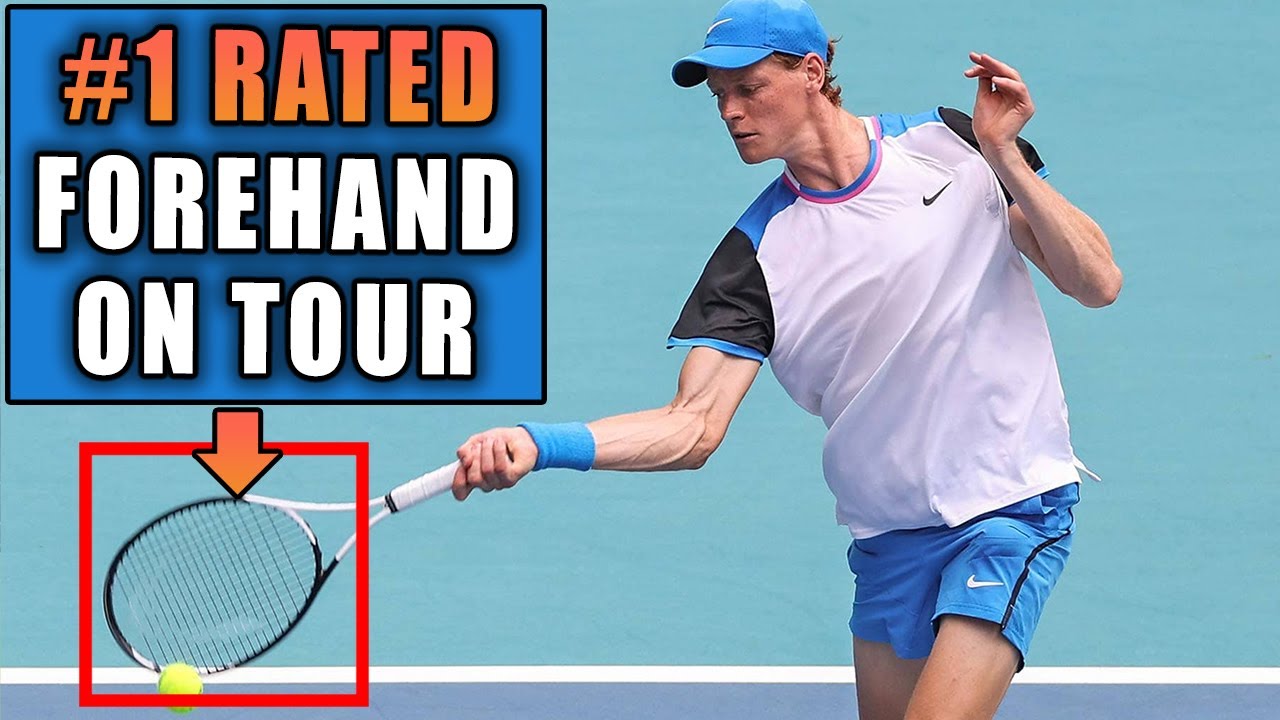Modern Forehand Tips And Technique Explained | Tennis Forehand Lesson
Summary
TLDRIn this informative tennis lesson, John Craig from Performance Plus Tennis explores the evolution of the forehand shot over the past 20 years. He demonstrates various forehand styles, including modern techniques like the floating wrist and the reverse forehand, as well as classic approaches. Craig emphasizes the importance of fundamentals such as unit turn, footwork, contact points, and unified movement for power and control. He recommends modeling forehand techniques after players like Carlos Alarz and Hugo Rune for simplicity and effectiveness, and advises against trying overly complex or snappy wrist movements, advocating for a simple, consistent forehand to win more matches.
Takeaways
- 🎾 The forehand in tennis has evolved significantly over the last 20 years, with various styles emerging.
- 🏸 John Craig's forehand is described as simple, without unusual nuances or complex movements, representing an older style.
- 🤔 There are modern forehand variations, like Tommy Paul's floating wrist and racket rise, which allow for more ball movement.
- 👋 Yannick Sinner's forehand features a pronounced lag and string rotation, which is challenging to execute without consistent practice.
- 🔄 Andy Roddick's forehand style involves pointing the racket tip at the ball before hitting it, creating a lag effect and more racket speed.
- 🌀 Roger Federer's forehand is noted for its simplicity and effectiveness, emphasizing the importance of fundamentals over style.
- 👣 Proper footwork and body positioning are crucial for storing energy and maintaining balance and control in forehand execution.
- 📍 Understanding the contact point's distance from the body in both width and depth is essential for consistent shot control.
- 💪 Power and control in the forehand come from a unified movement through contact, emphasizing shoulder rotation and a full extension.
- 👀 Observing top ATP players like Carlos Alcaraz and Hugo Rune can provide excellent models for a clean and effective forehand.
- 🚫 Avoid deliberately snapping or releasing the wrist through contact; let it happen naturally if the player is relaxed.
- 🔄 Strive for simplicity in the forehand to achieve consistency, which is key to winning more matches.
Q & A
What is the main focus of John Craig's lesson in the provided transcript?
-The main focus of John Craig's lesson is to cover the forehand technique in tennis, discussing its evolution, variations, and how to find the ideal forehand style for the viewer.
How does John Craig describe his own forehand technique?
-John Craig describes his forehand technique as simple and clean, without any unusual nuances, funny movements, or wrist flicks.
What are some of the different forehand styles that have evolved in tennis over the last 20 years?
-Some of the different forehand styles include the modern forehand with a floating wrist, Yannick Center's forehand with strings facing the back fence and a lag, and Andy Roddick's forehand with the racket tip pointing at the ball before hitting it.
What is the significance of the 'floating wrist' in the modern forehand technique?
-The floating wrist allows for more movement into the ball, enabling players to generate more spin and control.
How does John Craig demonstrate the modern forehand technique with the floating wrist?
-John Craig tries to lift the racket high and give it a go, experimenting with the technique despite never having tried it before.
What is the difficulty in executing Yannick Center's forehand technique?
-The difficulty lies in skillfully getting the racket strings from facing straight back to straight forward, which requires tremendous timing and is challenging for recreational players to develop.
What is the 'buggy whip' forehand and how is it used?
-The 'buggy whip' forehand, also known as the variation forehand or reverse forehand, is a technique used by players like Rafael Nadal, especially for high balls or when late on the ball, to generate spin and reach balls that are far away.
Why does John Craig recommend simplicity in the forehand technique for recreational players?
-Simplicity in the forehand technique is recommended for consistency, which is key to winning more matches, and because complex movements are difficult to develop and maintain for players who do not play regularly.
What are the fundamental aspects of the forehand technique that John Craig emphasizes?
-The fundamental aspects include a unit turn for power and control, proper footwork for balance and energy storage, understanding the contact point, and a unified movement through contact that rotates through the shoulders.
Which ATP Tour players does John Craig suggest as good models for a clean and simple forehand?
-John Craig suggests looking at Carlos Alcaraz and Holger Rune as good models for a clean and simple forehand.
What should a player avoid when trying to improve their forehand technique?
-A player should avoid deliberately snapping or releasing the wrist through contact, as this should happen naturally if the player is relaxed and goes through the proper motion.
Outlines

هذا القسم متوفر فقط للمشتركين. يرجى الترقية للوصول إلى هذه الميزة.
قم بالترقية الآنMindmap

هذا القسم متوفر فقط للمشتركين. يرجى الترقية للوصول إلى هذه الميزة.
قم بالترقية الآنKeywords

هذا القسم متوفر فقط للمشتركين. يرجى الترقية للوصول إلى هذه الميزة.
قم بالترقية الآنHighlights

هذا القسم متوفر فقط للمشتركين. يرجى الترقية للوصول إلى هذه الميزة.
قم بالترقية الآنTranscripts

هذا القسم متوفر فقط للمشتركين. يرجى الترقية للوصول إلى هذه الميزة.
قم بالترقية الآنتصفح المزيد من مقاطع الفيديو ذات الصلة

PRO Forehand In 5 Simple Steps | Tennis Forehand Technique Lesson

Jannik Sinner Forehand Analysis- Footwork, Technique, Swing Path And MORE!

Professional Volley Technique Explained | Volley Tennis Lesson

Top 5 Best Tennis Servers Of All Time (My Bias Opinion)

This spine exercise gives older players smoother strokes!

Tommy Paul Serve Analysis- Natural And Solid Fundamentals!
5.0 / 5 (0 votes)
